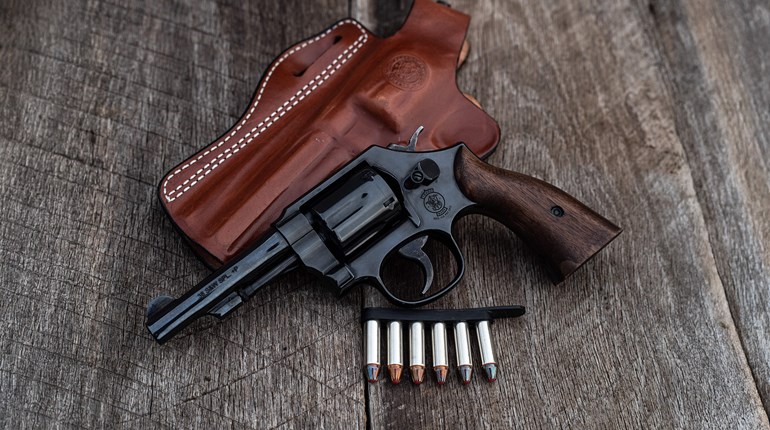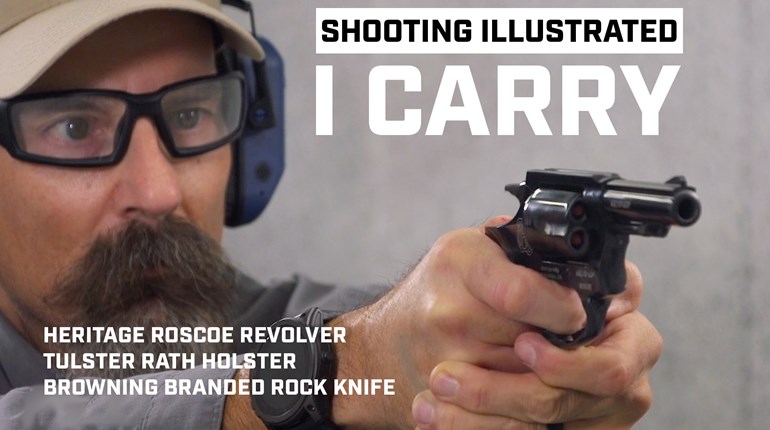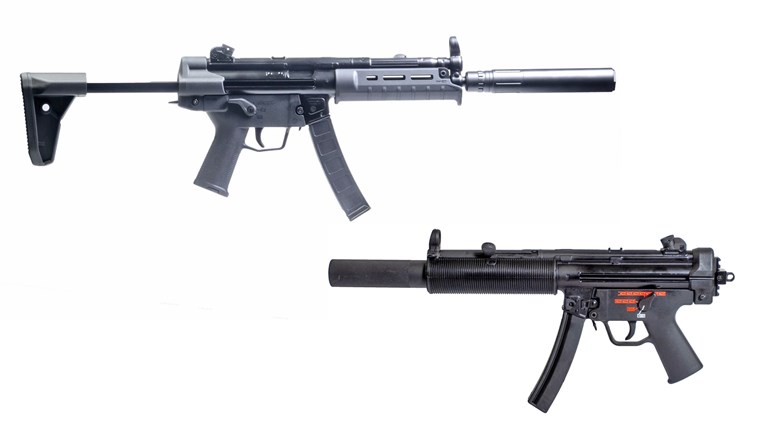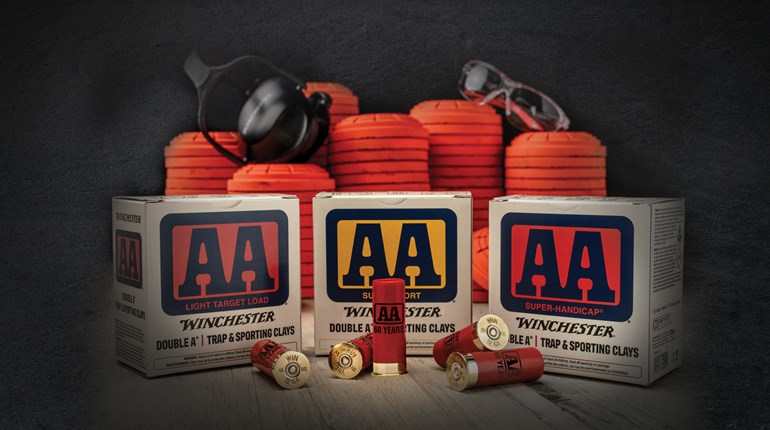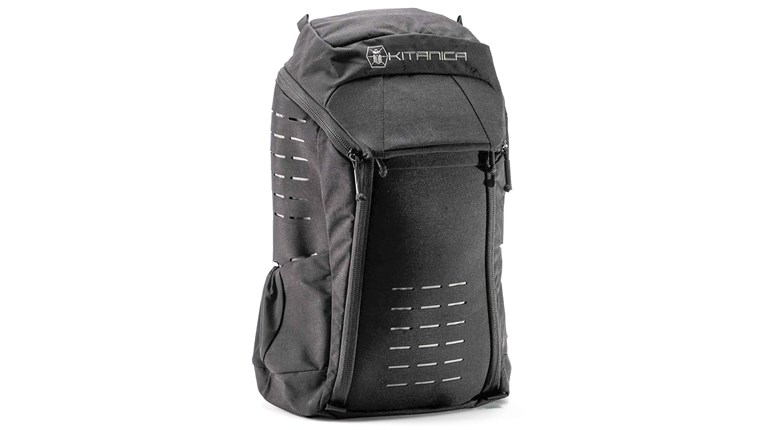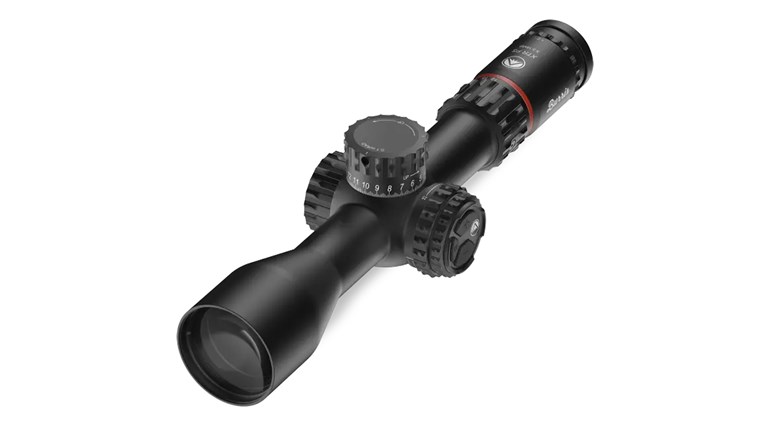
The saga of the Smith & Wesson Model 29 began in the early 20th century with a coterie of big-bore pistolero handloaders, hunters and lawmen whose combined efforts gave us the .357 Mag. in 1935. But that wasn't enough for those who favored pushing bigger bullets at higher velocities. Forming an unofficial group known as the .44 Associates, they focused on stoking up the .44 Spl. to see if they could take it to a ballistics level where no cartridge had gone before.
Chief among these proponents was a pistol-packing Idaho rancher named Elmer Keith, whose experimentations and writings describing his handloading and hunting exploits put him front and center in the post-war development of what would become the .44 Mag. In 1907, the .44 Spl. was developed as a longer-cased, smokeless-powder version of the .44 Russian. Smith & Wesson created the .44 Spl. as an inaugural chambering for its New Century revolver—the First Model Hand Ejector of 1908, or Triple Lock.
But due to the fact the smokeless .44 Spl. was more accurate when kept at black powder velocities approaching that of the older .44 Russian, this newer cartridge was not factory loaded to its maximum potential. It was the perfect candidate for Keith's ".44 Special Magnum" cartridge, as he wanted to call it. His ongoing experimentations succeeded in blowing up cylinders and topstraps of numerous revolvers, but at last he had a cartridge with which he was satisfied.

He convinced Remington Arms Company to produce it, but first the case had to be lengthened .1 inch beyond that of the .44 Spl. to prevent shooters from duplicating Keith's cylinder-splitting exploits, much as the .357 Mag. case had to be made longer than the .38 Spl. upon which it was based. The result was the .44 Mag., which held a semi-jacketed 240-grain bullet that thundered out of the barrel at 1,400 fps and struck with more than 750 foot-pounds of energy at 50 yards—almost double that of the .357 Mag., until then the most powerful commercially available handgun cartridge. Now, that title was about to be transferred to the new .44 Mag.
As for a handgun, Smith & Wesson had just the revolver—the Triple Lock—which had gone through Second and Third Model pre-war variations and now existed as the Hand Ejector Fourth Model, or 1950 Target (later known as the Model 24). But first, some beefing up was required to ready this six-shot wheelgun for the .44 Mag.
A longer cylinder closed the gap between it and a thicker barrel, both of which bumped the weight of the pistol to 48 ounces and helped tame recoil. In addition, the cylinder featured recessed chambers, which enclosedthe cartridge heads.
The first gun, one of five sequentially numbered prototypes built on what was then known as the S-frame, was serial number S121835. On Dec. 15, 1955, the first production gun, serial number S130927, was completed. On Dec. 29, the second gun, S130806, was presented to R.H. Coleman of Remington, and on Jan. 19, 1956, the revolver was officially announced to the public. It was simply called the .44 Magnum, and the price was $140.
The .44 Magnum was fitted with goncala alves target grips and offered with blued or nickel finishes—both with case-hardened hammer and trigger—and featured adjustable sights and a 4- or 6.5-inch barrel. The handgun was housed in a black, wood satin-lined case embossed with ".44 Magnum" and the Smith & Wesson logo on the lid. Included were a screwdriver and a cleaning rod with wire brush and cotton-swab attachments. Of the next five models produced, all in Jan. 1956, S130942 was shipped to Julian Hatcher, technical editor of American Rifleman. On Jan. 27, number S147220 went to Elmer Keith. Other notable gun writers of the day also received 6.5-inch-barreled versions.

Hatcher's review broke in the March 1956 issue and other articles appeared soon after. The .44 Magnum was an immediate success, especially among hunters (no doubt enamored with Keith's exploits of having dropped a deer at 600 yards with his revolver) and a few law enforcement personnel who liked the cartridge's potential to effectively crack an automobile's engine block. Others soon realized .44 Spl. rounds (which could also be chambered in .44 Mag. revolvers) made this hefty handgun much more comfortable to shoot over the long term.
In 1957, reflecting a change in designation throughout the Smith & Wesson line, the .44 Magnum became the Model 29, starting with serial number S179000. An 83⁄8-inch barrel was added in 1958 and the black wooden case was changed to mahogany in 1960. The Gun Control Act of 1968 changed the S-frame designation to an N-frame prefix, beginning with N1 and ending in 1983 with N96000. After that, a new serial-number series featured three letters followed by four numbers. In 1979 the 6.5-inch barrel was shortened to 6 inches and in 1981 the counterbored cylinder chambers and pinned barrel were eliminated. Later, the pivoting hammer-mounted firing pin was changed to a frame-mounted version.
Over the years, the Model 29 underwent many variations, including Model 629 stainless steel versions, silhouette guns and limited-edition Performance Center specials, all of which proved popular. But nothing compared with the unprecedented publicity the Model 29 received in 1971 with the film "Dirty Harry," when Clint Eastwood uttered these now-immortal words: "...this is a .44 Magnum, the most powerful handgun in the world, and would blow your head clean off." Sales soared and for a while, Model 29s were selling for three times their suggested retail price—if one could be found for sale.
The Model 29 was discontinued in 1999, but has been brought back recently as a limited-edition Classic in 4- and 6.5-inch barrels. In my collection, I own one that was shipped to a gun writer in New York in 1957, who unfortunately marked his test guns with a six-dot punch pattern. When I acquired it, the gun had been fired so extensively with full-house loads I had to screw the barrel back a full turn to close the cylinder gap. This early gun still has right-hand threads on the ejector rod, so it backs out and jams after a few cylinders of ammunition. But as the second gunwriter to own this Model 29, I feel I'm continuing a legacy started by the late Elmer Keith, Skeeter Skelton and other members of the .44 Associates, all of whom felt that when it comes to handguns, bigger is better.












